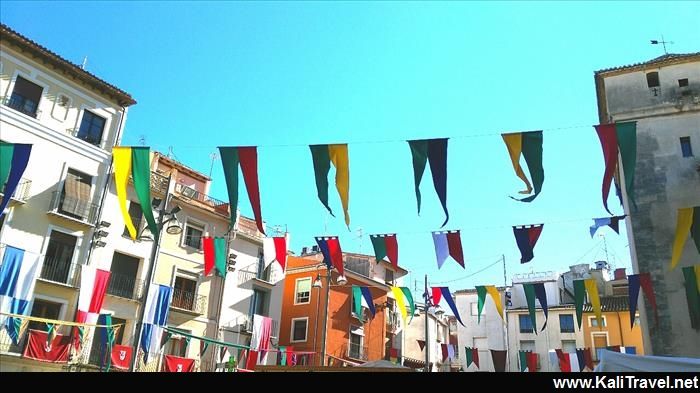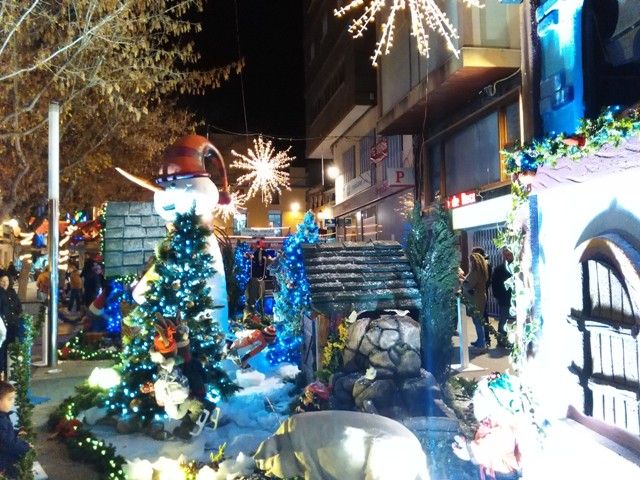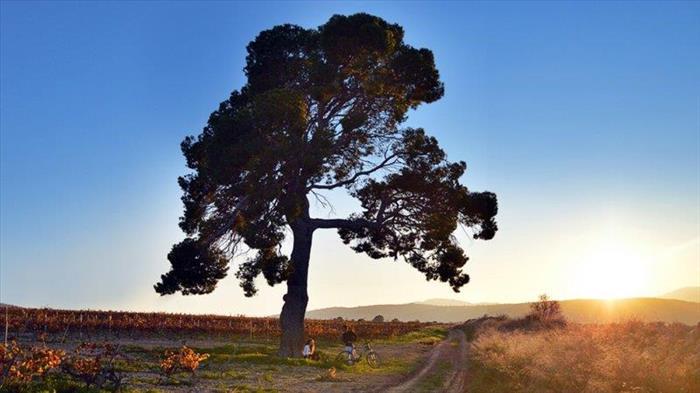O Grove seafood festival in Galicia takes place every October in the north of Spain. The annual festivities and food tasting in the fishing village of O Grove, Fiesta del Marisco or ‘Festa Do Marisco’ as it’s called in the Galician language, is possibly one of Spain’s best kept secrets.
Although Spaniards travel from every corner of the land – coach-loads of pensioners displaying childlike enthusiasm, wealthy couples with holiday residences on exclusive La Toja Island, and trendy Madrid city dwellers, join a large contingent of local Gallegos – I have yet to encounter a foreigner at O Grove seafood fiesta (excepting myself obviously).
O Grove Seafood Festival
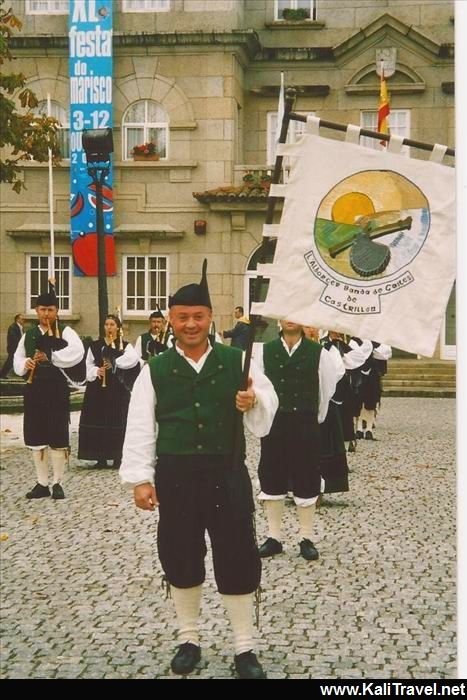
Every October since 1963, the busy fishing village of O Grove, located in the heart of the Galician Rias Baixas, has celebrated the now traditional Fiesta del Marisco. Stands offering an amazing array of locally and freshly caught seawater delicacies, prepared before your eyes by the villagers, are located in the extensive covered fish-market down by the quay.
Smart, long pine trestle tables are set up – no chairs unfortunately, you stand up but that’s part of the fun – with everyone standing side-by side from the humblest fisherman to the most sophisticated career woman getting down to the serious finger licking business of devouring oysters, clams, razor-fish, prawns, octopus, crab, ‘percebes’ and especially the O Grove mussels which the area is renowned for.
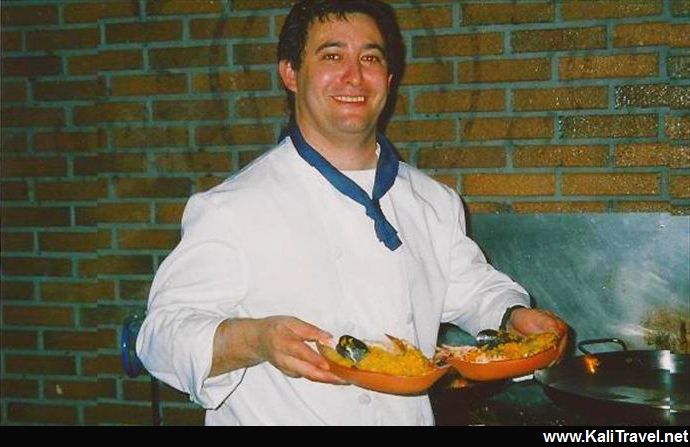
Steaming seafood ‘marisco’ rice is piled onto commemorative wooden plates and similar to paella, is delicious and the exquisite turbot is just out of this world.
And all of this washed down with the local plonk, the crystal clear Ribeiro white wine or the aromatic Albariño D.O Rias Baixas, drunk out of plastic cups!
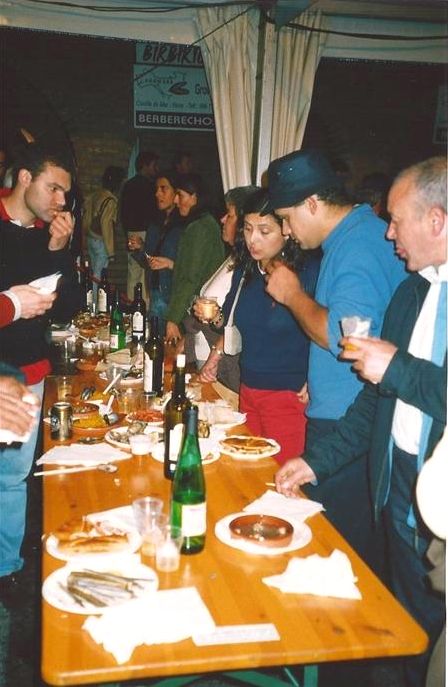
The ‘lonja’ is open from 11.00/12.00 onwards. Decide which seafood you fancy, mark it down on the form, hand it over to the girls on the central tills, and for a fairly modest price you’ll be given vouchers to pick up your chosen delicacies at the corresponding booth under the archways. You can order a dish or two of ‘marisco’ for aperitif or go the whole hog and make a banquet out of it. Most evenings folk groups play to add to the party atmosphere.
An international open air marine-themed sculpture competition also takes place each year in O Grove at festival time. It’s amazing to see how the sculptors hewn works of art out of heavy slabs of local granite. The winning statue will join previous year’s masterpieces placed in the village park or along the promenade.
Boat trips around the bay and out see the ‘bateas’ where the mussels are bred are very popular. Bring a raincoat, because although the weather is still quite mild in October, showers are likely!
O Grove and La Toja
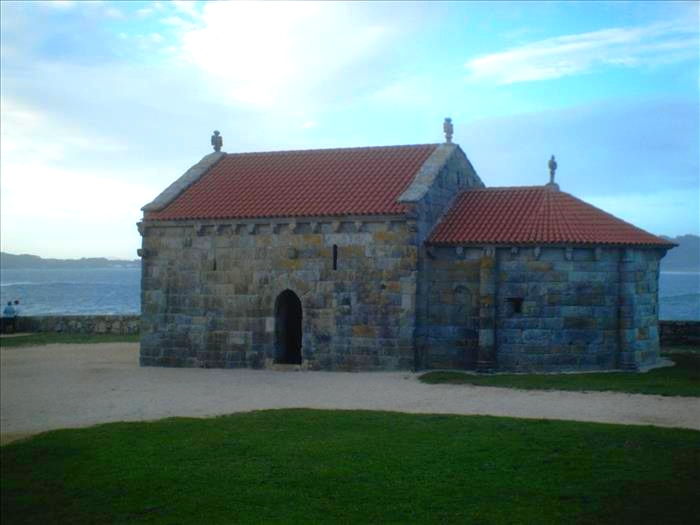
O Grove peninsula is almost an island being joined to mainland Spain by a narrow strip of land bordering A Lanzada, a long, open sandy beach. Opposite, a marshland is revealed at low tide, a haven for bird watchers.
A thriving riverside village with several beaches, O Grove itself is a favourite with holidaymakers and is bustling with shops, taverns and restaurants.
The lengthy seafront is lined with seafood restaurants all displaying their wares in aquariums! Most offer a platter of seafood for two with a bottle of white wine as a special, so if you fancy dressing up and sitting down for a change you’ll be spoilt for choice. Don’t forget to try authentic ‘vino turbio’- a cloudy white wine which is sipped out of little bowls.
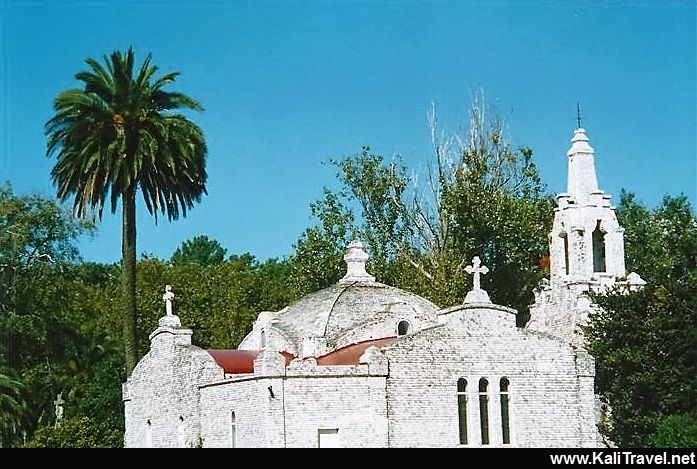
At the end of the promenade, a white stone bridge links to La Toja Island, a beautiful, thermal spa retreat boasting five star hotels, a casino and renowned golf course.
It’s a hideaway for the seriously well-to-do and for famous sports personalities. A chapel with shell faced walls is an unusual feature.
La Toja toiletries have been made from the local salts for centuries and there is a visitors’ centre where you can purchase soaps and skin creams.
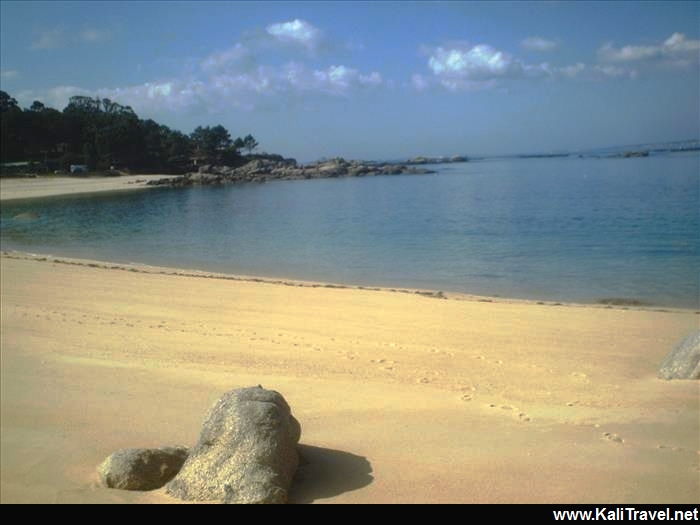
A drive round the virtually undeveloped O Grove peninsula leads to deserted (in October at least), sandy bays such as Mexilloeira which are ideal for kicking your shoes off and paddling in the lapping, cool waters.
The small, natural Bodeira lagoon lies hidden behind the sand dunes nearby. There are two or three hamlets, rural hotels and camping sites along the way round.
In the centre of the small peninsula, tree-clad Mount Siradella rises and there is a nature interpretation centre at the top which can suggest suitable walks.
Places to See near O Grove
Galicia is renowned for excellent food besides fish, and typical restaurants away from the coast offer succulent flame-grilled or roasted meats and marvellous wines.
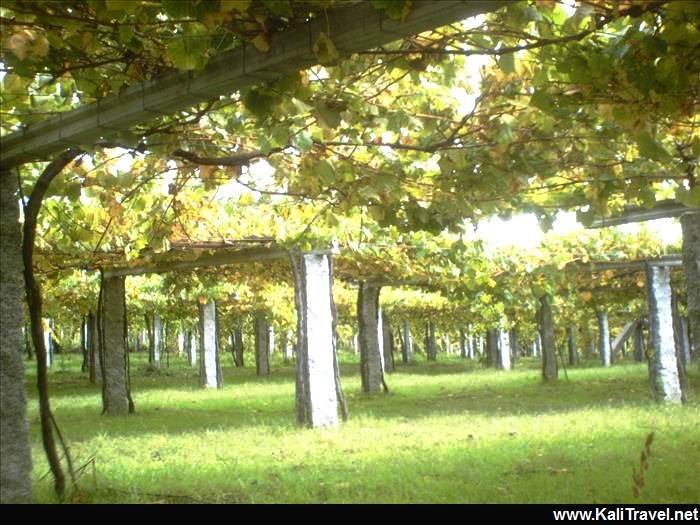
Albariño Wine Route
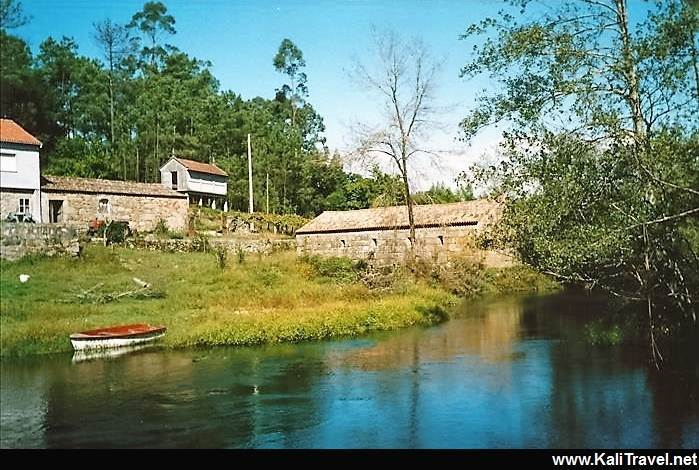
O Grove is in Pontervedra Province where the vibrant green countryside is criss-crossed with rivers and dotted with vine groves which sparkle in the sunshine with rain drops. The Albariño wine route passes 30 bodegas.
Inland there are monasteries and mysterious mountains, such as Mount Lobeira, which give rise to ancient legends of meigas (witches).
Pontevedra City
If you get bored with O Grove, which is unlikely, or tired of stuffing seafood -a definite possibility believe me- there is a never ending possibility of fabulous places to visit in Pontevedra.
The rambling old quarters of this historical provincial city is well preserved and many establishments are artistically refurbished inside by modern designers. The XVI century Santa Maria Cathedral where tragically drowned fishermen are buried is beautiful and emotively haunting.
Tui
Tui is a historic town, further down by the Portuguese border, overhanging the River Miño. The scenic location is worth a visit, as is the Mount Aloia parkland in the same vicinity.
Cambados
Cambados is a well kept small medieval coastal town where Spanish nobility lived and the posh Parador Hotel is located here in a stately XVII ‘Pazo’ or mansion. The main square is backed by bodegas, churches, palaces, olde worlde cafes and gift shops.
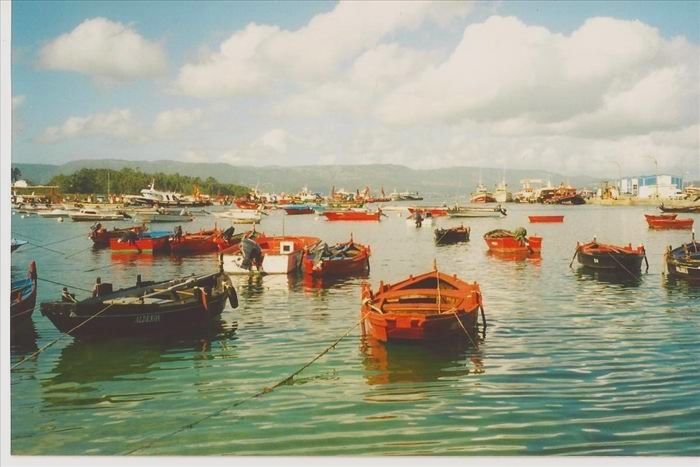
Illa de Arousa
Illa de Arousa is an incredible island reached by a long, low bridge. It has a tiny village with a seafront one side and a harbour with lots of brightly painted fishing boats the other.
The remainder of the isle is protected natural parkland surrounding a myriad of tiny, shell shaped, sandy coves.
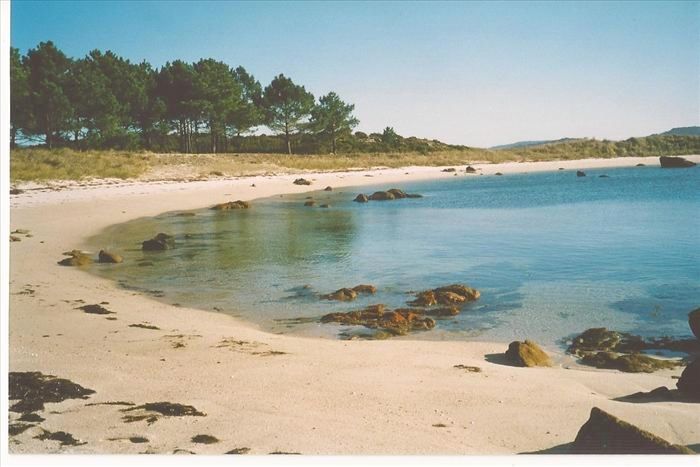
Local men can be seen ‘marisqueando’, fishing in shallow waters for seafood, while the women rake the shoreline for shellfish. Surprisingly the island’s fish market auctioning fish straight off the boats is thoroughly up-to-date and digitalized.
Where to Stay in O Grove
There are many holiday resorts in the whole area, hotels, hostels, apartments and camping sites. If you want to enjoy the fiestas and drink the local wine too, I’d recommend staying in the centre of O Grove then you don’t need to use the car.
How to Get to O Grove
O Grove seafood festival
Tourist Office 98 673 1415
www.turismogrove.com
Accommodation
1* Hotel Brisa del Mar (O Grove seafront) 98 673 1836
5* Hotel Louxo La Toja 98 673 0200 http://www.louxolatoja.com
4* Cambados Parador 98 654 2250 http://www.parador.es
Related Posts:
Related Posts on Traditional Festivities in Spain
Alicante: Festivities along the Costa Blanca
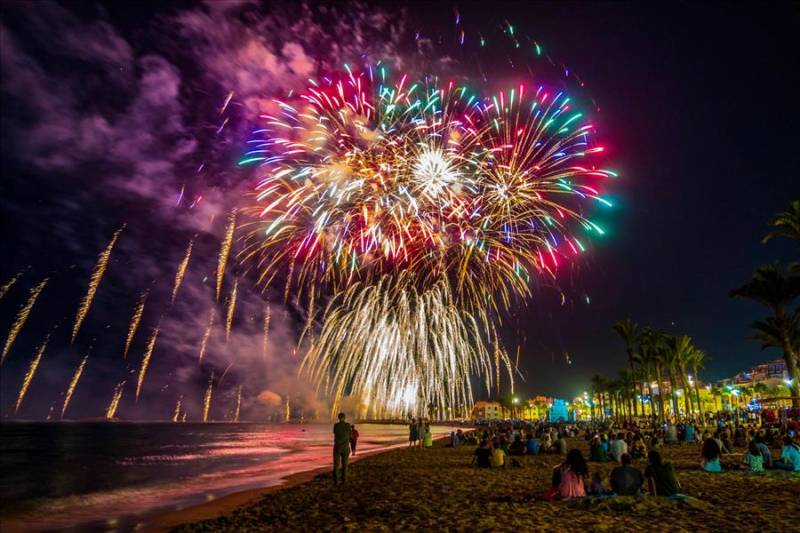
There are hundreds of local festivals every year on the Costa Blanca.
Every town and village has its own traditional fiestas, the most notable are the Fallas Fiestas in March, San Juan celebrations in June, the Villajoyosa sea battle in July, Altea L’Olla beach firework display in August, and the Moors & Christians parades.
Fira De Tots Sants – Cocentaina Medieval Fair
‘Fira de Tots Sants’ Medieval Fair in Cocentaina (Alicante) takes place around the 1st of November each year. The oldest fête in Spain is held in Cocentaina, a historic market town on the Costa Blanca!
Christmas and New Year Festivities on Costa Blanca
Throughout Spain the Christmas season is in full swing by the beginning of December – Xmas markets and fairs, street entertainment, concerts and nativity scenes. Find out what’s happening at Christmas and New Year on the Costa Blanca, you definitely won’t get bored!
Wine Harvesting Festival in Jumilla
August Wine Harvesting Festival in Jumilla (Murcia).
The Traditional Wine Fair, National Folklore Festival, and Moors & Christians Festivities take place in the historical city of Jumilla – grape treading, wine making and tastings, colourful parades and processions, shows and performances. Don’t miss this amazing festival!
Discover the World with![]() the blog with a focus on independent travel
the blog with a focus on independent travel




